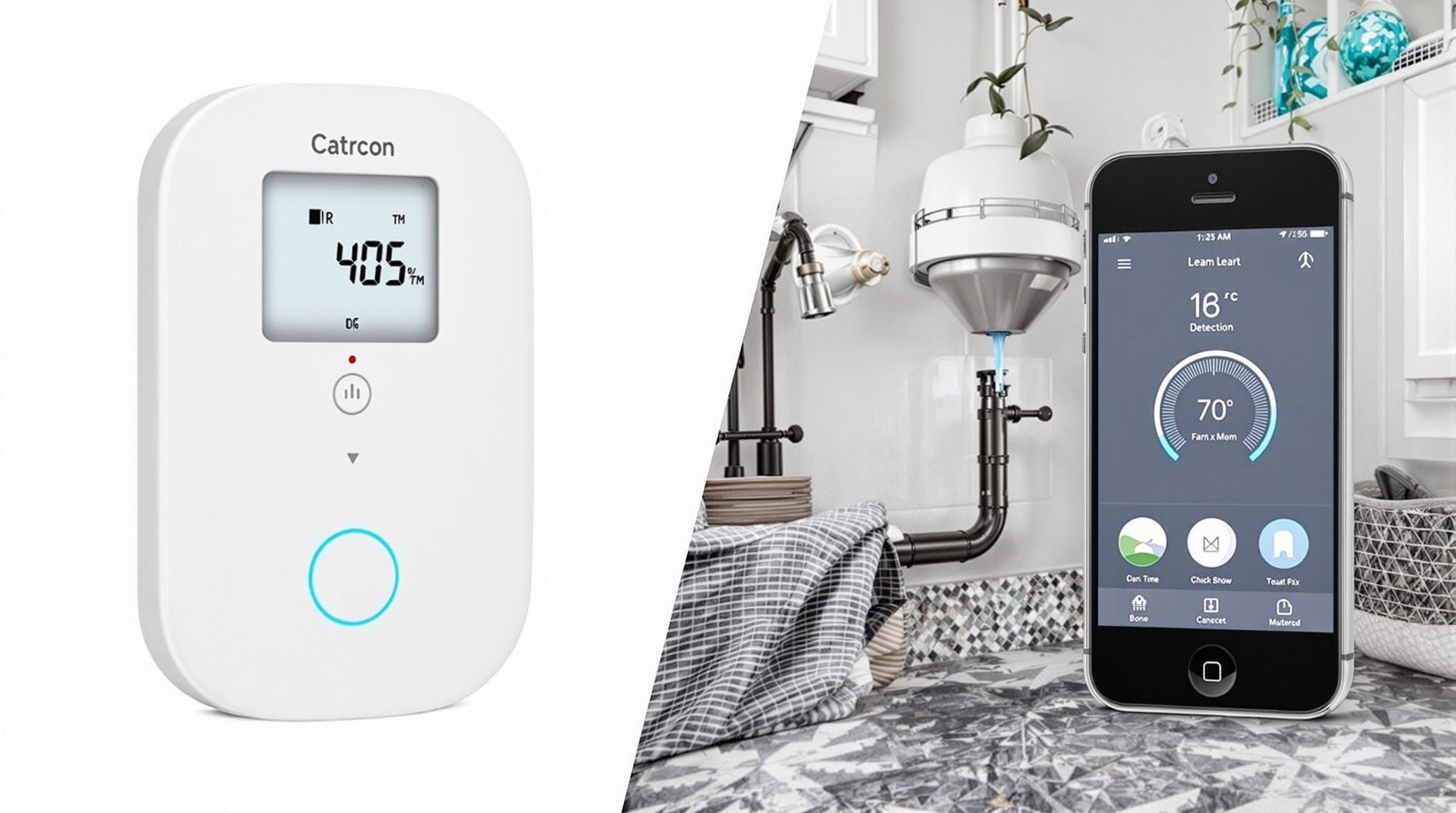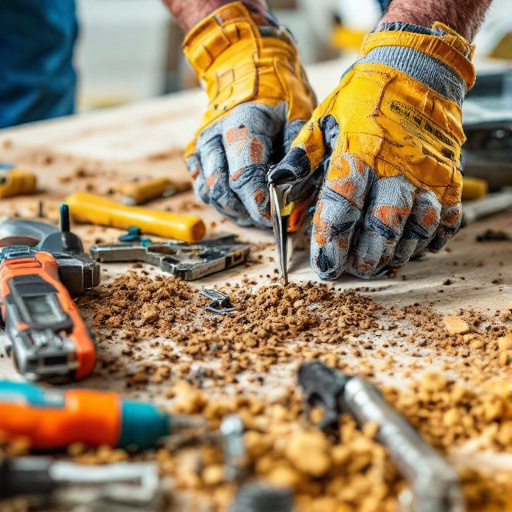Featured Articles
- Repairing Relationships: The Surprising Role of Home Repair Services in Strengthening Family Bonds
- Revolutionizing Home Repair: The Rise of DIY AI Assistants in Fixing Household Problems
- The Hidden Costs of DIY: When Home Repair Projects Become Money Pits
- The Hidden Costs of DIY: When Home Repairs Turn into Financial Nightmares
- The Rise of DIY Disaster Stories: When Home Repair Services Become a Last Resort
Unconventional Home Repair Hacks: How to Fix Your Space with Green Cleaning Products and Household Items
Unconventional Home Repair Hacks: How to Fix Your Space with Green Cleaning Products and Household Items
Did you know that your kitchen pantry is a treasure chest of tools for unconventional home repairs? In this article, we'll explore creative ways to fix up your space using green cleaning products and everyday household items—much to the delight of eco-conscious DIYers everywhere.
Embracing the Green Revolution in Home Repairs
Once thought of as merely cleaning agents, green cleaning products have emerged as versatile tools in the DIY repair arsenal. According to a report by Grand View Research, the global green cleaning products market is expected to grow by 11.4% annually over the next several years (Grand View Research, 2021). This isn't just a trend; it reflects a broader societal shift towards sustainability that also influences home maintenance practices.
The Power of Baking Soda
Baking soda is not just for baking; it's a superstar in home repairs. The magic lies in its abrasive quality, which helps tackle stubborn stains and scrubbing tasks, making it a reliable replacement for harsher chemicals. Need to unclog a drain? Mix half a cup of baking soda with half a cup of vinegar, pour it down the drain, and watch the fizzing reaction work its wonders. Give it a 30-minute wait time, then flush with hot water.
Case Study: The Stubborn Sink
Last year, I faced a stubborn kitchen sink that, no matter what I did, wouldn’t drain properly. I turned to the trusty combo of baking soda and vinegar. It was not only gratifying to see the gunk rise to the surface, but I also enjoyed knowing that my method was eco-friendly, rather than pouring potentially harmful chemicals down the drain.
Vinegar: The All-Purpose Solution
Vinegar may smell pungent, but it's a powerhouse when it comes to cleaning and repairs. Its acetic acid content can cut through grease and grime like a charm. For a squeaky-clean showerhead, soak it in a bag filled with vinegar overnight, then rinse to see the water pressure soaring back to life.
Moreover, vinegar can double as a fabric softener. Adding a cup of vinegar to the rinse cycle softens fabrics naturally, which can be particularly useful for repairing tough stains from clothes—something you'd want to have down pat for day-to-day life.
The Humorous Side of DIY Failures
Let’s lighten the mood! Ever tried to fix something and ended up in a mess? Like that time I thought I could restretch my ripped couch fabric using vinegar? Spoiler alert: I ended up with a desk chair covered in questionable patterns from the fabric remnants I tried to salvage.
DIY is an adventure filled with inevitable mishaps. Remember, laughter is the best medicine, especially when you’re scrubbing the kitchen floor and remembering your latest repair disaster. But fear not! With each mistake, you become wiser—and more adept at using your household items creatively.
Conversational Remedies for Everyday Problems
Got an annoying squeak coming from the bathroom door? Instead of running to buy a can of WD-40, reach for the coconut oil sitting in your pantry! Just apply a small amount on the hinges using an old cloth, and voilà—silent serenity is restored.
And who knew your trusty cornstarch could be a fabric cleaner? Mix two tablespoons of cornstarch with a cup of water to create a homemade carpet shampoo. Scrub your carpets with this mix, let sit for 30 minutes, then vacuum. You’ll be amazed at the transformation!
The Allure of Lemon Juice
When life hands you lemons, use them to repair your home. Lemon juice is a natural bleach and deodorizer that works wonders for whitening whites or eliminating odors. A notable application is mixing lemon juice and baking soda for a fast-acting bathroom cleaner. This dynamic duo vanquishes tough soap scum and mold. After using it, take a break, sip on some lemonade, and bask in the glory of your sparkling bathroom.
Statistics on Efficacy
A study published in the Journal of Environmental Health noted that households that adopted natural cleaning solutions reported 30% fewer respiratory problems related to mold and cleaning products (Patil &e. 2022). Besides making our cleaning less toxic, it also encourages the use of items we already have at home. This is a win-win scenario!
The Caffeine Fixer
Using discarded coffee grounds as a scrub for pots and pans is a surprising yet effective hack. The coarse texture works as an abrasive, and—good news—they smell great too! This trick not only contributes to waste reduction but offers a fresh scent that can brighten any scrubbing session.
Feeling adventurous? Mix coffee grounds with a little coconut oil for a natural exfoliant. Not only will your skin feel rejuvenated, but you'll also be promoting recycling at its finest—all while giving your body a spa-like treat!
Detangling Hair with Household Items
Everyone dreads the horror of tangled hair, but did you know that a few kitchen staples can help? Try mixing a teaspoon of olive oil with water in a spray bottle. Spritz it on the tangled section and gently work through with a comb. Trust me; your hair will thank you later!
Case Study: The Lemonade Stand
A friend of mine decided to set up a lemonade stand for some extra cash and ended up with sticky countertops and tables. Instead of feeling overwhelmed, she mixed equal parts of vinegar and water in a spray bottle and went to town scrubbing down the surfaces. The stand sparkled in no time, and she even noted how refreshing the natural scent was compared to commercial cleaners!
Wood Furniture Repair
Wooden furniture can often take a beating. Don’t let those scratches get you down! A simple hack involves using walnuts. Rub the nut over the scratches, and its natural oils will fill in the grooves and blend the scratch with the color of the wood. You’ll be surprised how effective a simple walnut can be as a repair tool!
From Messy to Masterpiece
Maybe you have a thin veneer cabinet that looks like it's been through a war zone. Using a mixture of equal parts vinegar and water can revive its shine. Dampen a cloth and wipe it down; you’ll feel like a master woodworker without the hefty price tag.
The All-Season Repair Bowl
As seasons change, so do our homes. From winter to summer, different repairs become necessary. It’s only fitting to discuss how green cleaning products can tackle seasonal wear and tear. In the winter, you might find your floors bearing salt stains from snow boots. A mixture of equal parts white vinegar and warm water can help lift those stains. The result? A sparkling clean floor without the harsh chemicals!
Encouraging Reader Engagement
I encourage you to try some of these unconventional repair hacks in your own home. You might find you enjoy the process more than you thought. The best part? You’ll save both money and reduce your chemical usage, giving Mother Earth a hand in the process!
Joy in the Journey of Repairing
Repairing one's home using unconventional methods can feel like an achievement. Beyond saving money, it brings that delightful spark of innovation. Armed with basic household items and a dash of creativity, you can transform your living space and share your discoveries—who knows, you might inspire someone else to go green!
Conclusion: Repair with a Purpose
In conclusion, unconventional home repair hacks are as much about fun and creativity as they are about effectiveness. Changing your perception of household items opens up a world of possibilities—like realizing every stain is just an opportunity for another DIY adventure. So roll up your sleeves, find that bottle of vinegar, and let the repairs begin!




